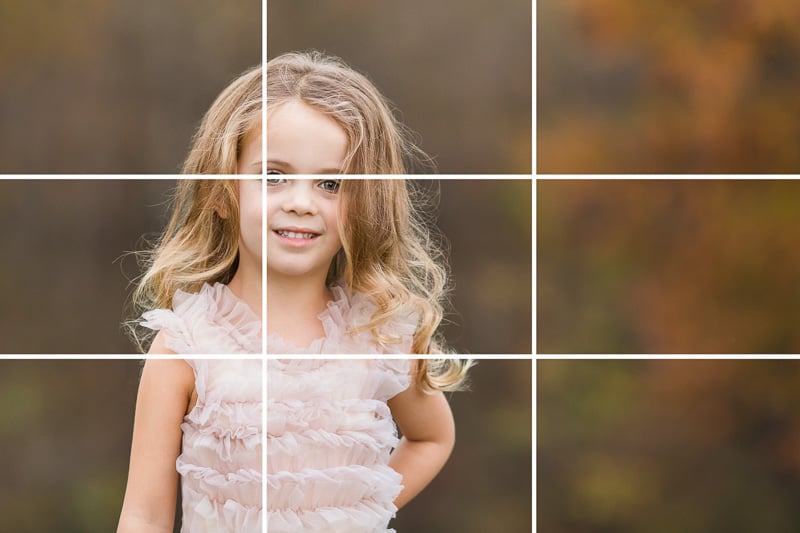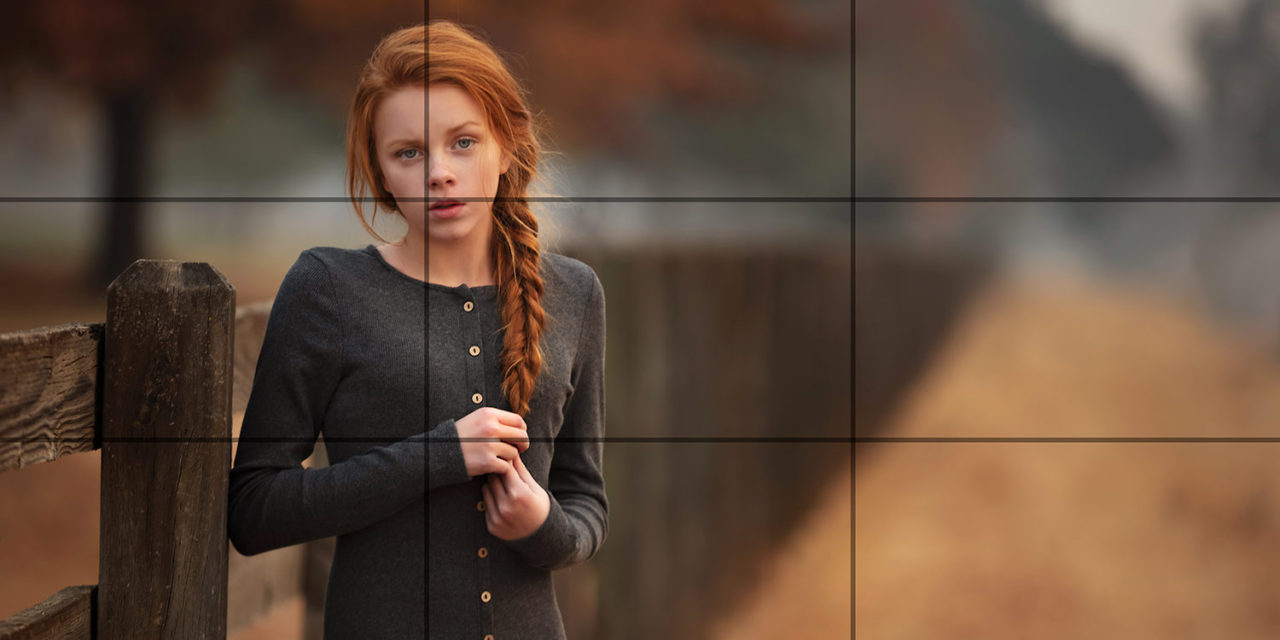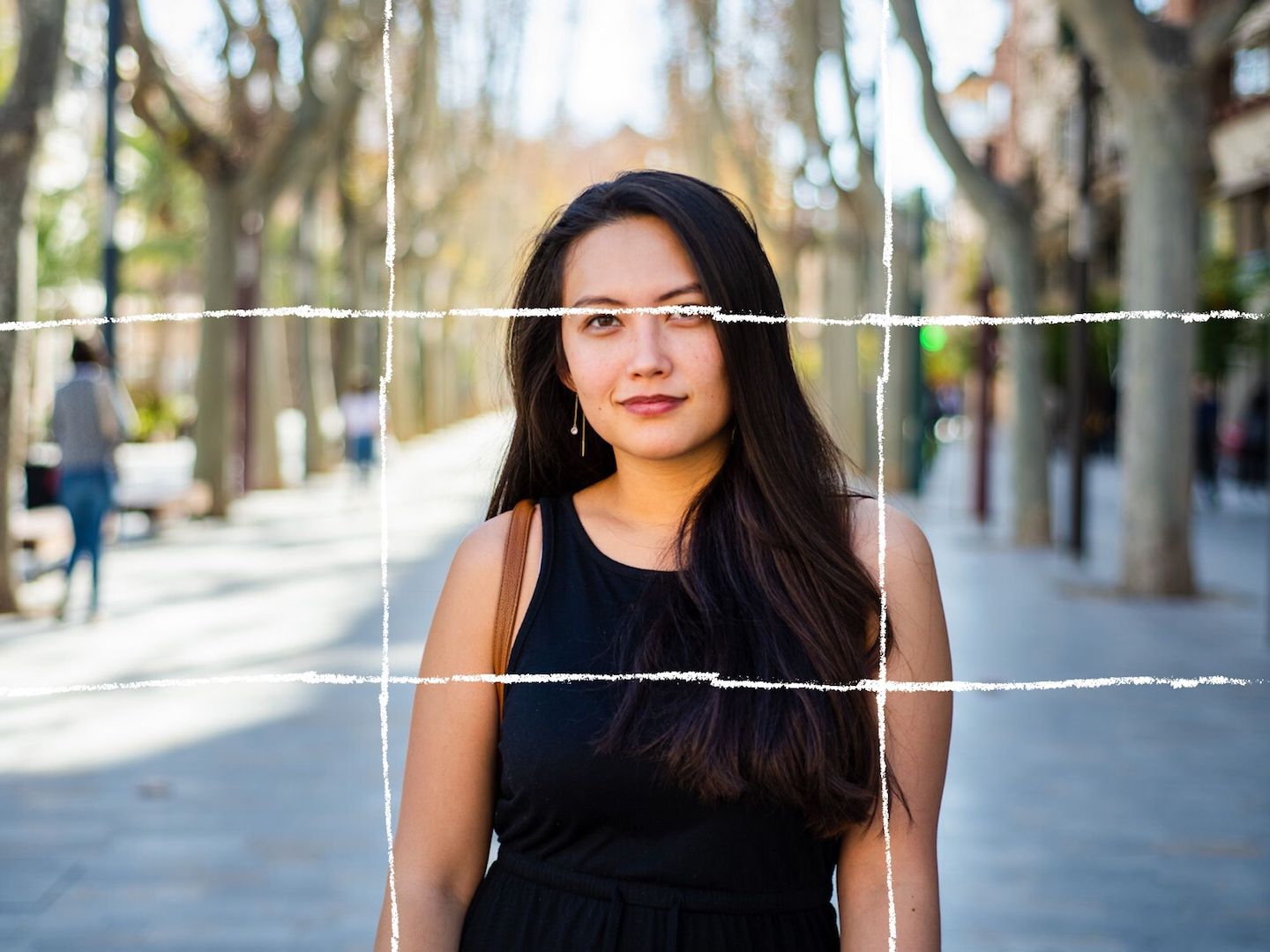This rule recommends dividing the image into thirds and placing your subject into one of those sides instead of in the. By doing so you draw your viewers eyes to one of the intersections in the most natural way.

How To Use The Rule Of Thirds In Photography
Rule of Thirds.

. The rule of 3rds applies to both horizontal vertical frames. It is also known by other names like the two-thirds rule one-third rule rule of three photography thirds rule etc. So you can apply it to images in landscape and portrait orientation also.
But in the example above by framing the subject off-center I was able to generate a clear sense of motion. Great Tips For Symmetry in Photography. This works for close-ups and wider more environmental portraits.
Their photographic composition or how they frame a photo. Professional portrait photographers often position the subjects face within the left or right two-thirds of the viewfinder with the subjects eyes along the top horizontal line. When youre shooting a close-up portrait place your subjects head in one of the thirds.
As I mentioned already the Rule Of Thirds can be used not only for a portrait shot but also in landscape photography. With the help of the rule of thirds you can create more engaging interactions between the image and the viewer. The rule of thirds can be used for close-up portraits as well.
In portrait photography the rule of thirds is fairly simple to apply. In photography the rule of thirds is a composition type in which a photo is divided evenly into thirds horizontally and vertically. At its most basic the rule of thirds states that placing the key elements on the thirds of a picture is more pleasing to the eye than centering the subject or creating symmetry.
Your key elements create visual interest in a. The best way to make your subject stand out when using the rule of thirds is to focus on colors that stand out. If you follow the rule your photo will have four intersection points where you can position the subjects face a sunset silhouette or a feature such as the horizon or the sea.
The image below is a prime example of a precisely used rule of thirds in portrait photography. The rule of thirds is actually quite useful for portrait photography. The thirds of an image can be found by dividing an image into nine equal parts with two equally spaced vertical lines and two equally spaced horizontal lines.
EOS M5 EF-M55-200mm f45-63 IS. The Rule of Thirds. Dynamism movement First by positioning key elements at rule of thirds intersections or gridlines your photo becomes more balanced.
In portrait photography the rule of thirds is used to achieve perfect composition by aligning people or their faces with the grid lines. Portrait photographers usually position the subjects face to align the top horizontal line with their eyes. Aug 2 2021 4 min read.
In portrait photography the main focus is usually on the subjects face. Photo courtesy of Unsplash. Because a subjects eyes are often the main focal point of a portrait photographers tend to center the subjects face on the left or right vertical grid line with.
The rule of thirds is applied to portrait photography in its position of the eyeline. The rule of thirds the most ubiquitous rule in all of photography. Get one of their eyes at the intersection.
The corners of your central square will be the intersections. Whats more the rule is more easily applied today than ever before - most cameras have a rule of thirds grid that can be engaged such that you can quickly and easily compose a better shot. Rule of thirds in portraits.
In general no matter the crop or orientation the eyes are placed on the upper third. These lines intersect four times and along these points are where your subjects should be placed. Ricards has placed the model on the vertical line and the eyes on the upper line.
Now that you know how to follow the rule of thirds its important to understand why it matters and what exactly it can do for your photos. Rule of thirds in Portrait shoots. Intersections are critical in a photo because it is.
The rule of thirds is an imaginary tic-tac-toe board that is drawn across an image to break it into nine equal squares. And make the eyes the point of interest putting in on the intersection point. Then with the imaginary 33 grid of 9 segments formed by two horizontal and vertical lines each the images subject is positioned at the intersection of those dividing lines or along with one of the lines itself.
The rule of thirds is a composition guideline that places your subject in the left or right third of an image leaving the other two thirds more open. When using the rule of thirds there are four. Learn about the Rule of Thirds a basic trick to perfecting your photographic composition below.
Rather than having the face in the centre or filling the frame professional portrait photographers normally place the eyeline along the top vertical line in a rule of thirds grid. Really the rule of thirds is about two things. By placing the subject where the lines intersect you will achieve a more balanced and.
While there are other forms of composition the rule of thirds generally leads to compelling and well-composed shots. So the face fills the entire frame. This rule breaks down a photo into a grid with nine equal parts separated by two horizontal and vertical lines.
The four points where these lines intersect are the strongest focal points. How to Practice the Rule of Thirds and Photography Tips. In close-ups you usually frame the shot fairly central.
Using the rule of thirds for the portrait of the. The rule of thirds can be applied to virtually any type of photo from a portrait to a landscape to a street scene. The rule of thirds is a rule in photography that means dividing your photo into three equal lines horizontally and vertically.
In portrait photography the rule of thirds is most often applied to the positioning of the eye line because the eyes are typically the intended focal point of the frame. Rule of thirds portraits dont put the subject in the middle of the frame whether thats a professional wedding photo or a photo of a beloved pet. The lines themselves are the second strongest focal points.
About Press Copyright Contact us Creators Advertise Developers Terms Privacy Policy Safety How YouTube works Test new features Press Copyright Contact us Creators. Nancy Rosenbaum Nancy Rosenbaum Nancy Rosenbaum. You can place the model in the vertical line.
Rule of thirds implies putting the subject or point of interest into a specific location in the frame. Written by the MasterClass staff. We know the standard trajectory of an aircraft.
What sets great photographers apart from good ones. Lines lead the eye from one point to another Diagonals can convey motion and energy Horizontals can convey stability calm Verticals can convey strength solidity and power Arcs and semi-circles can isolate emphasize and frame an area Patterns create rhythm and. The rule of thirds is one of the compositional rulesguidelines that applies to landscape street photography pet photography and portrait photography.

Rule Of Thirds 2022 The Definitive Guide With Examples

Rule Of Thirds In Portrait Photography Composition Guide Bidun Art

How To Apply The Rule Of Thirds In Portrait And Street Photography

The Rule Of Thirds A Simple Way To Improve Your Images Digital Photography Review

Understanding The Rule Of Thirds

What Is The Photography Rule Of Thirds

How To Apply The Rule Of Thirds In Portrait And Street Photography

0 comments
Post a Comment